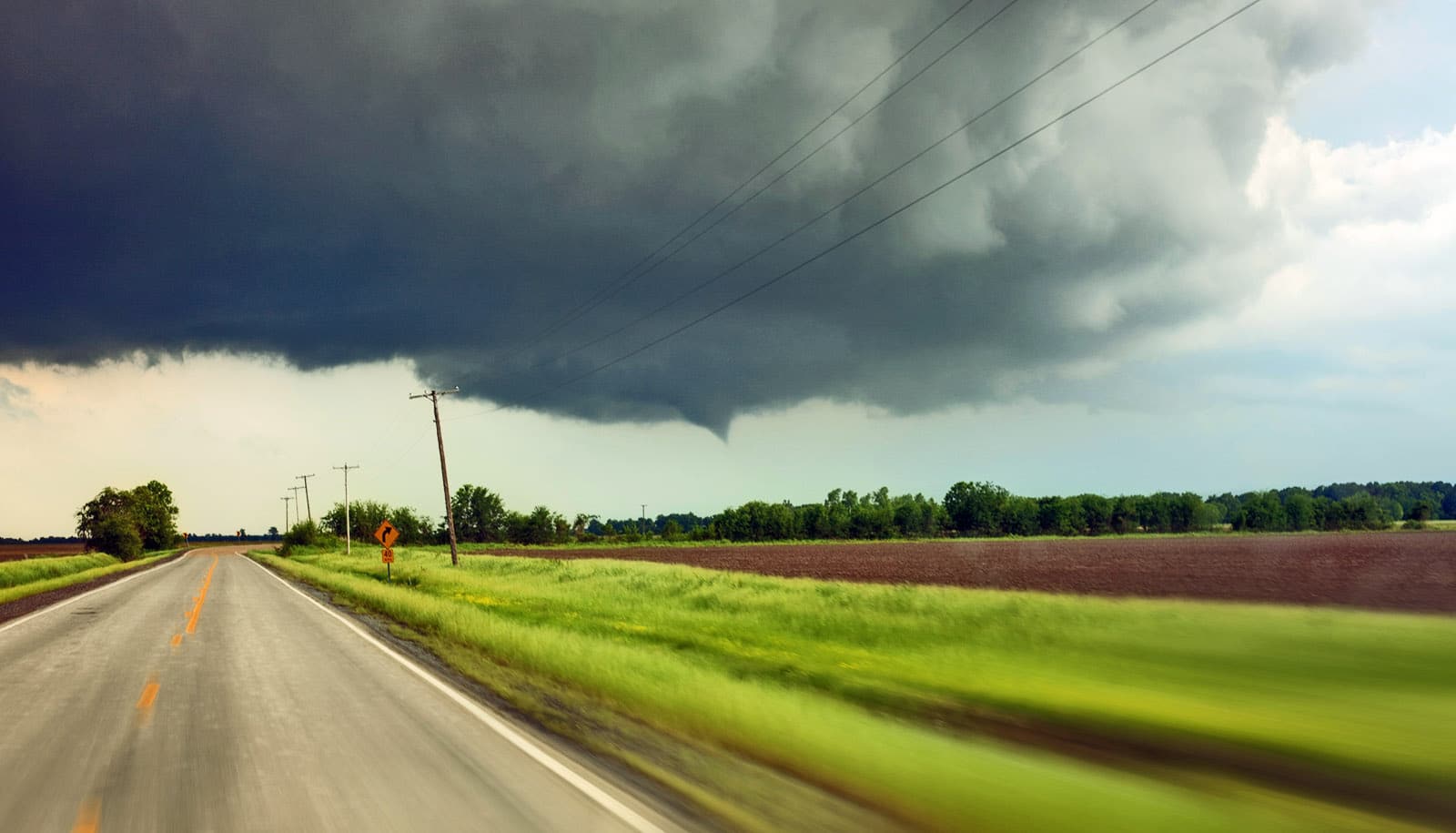The increase in large-scale tornado outbreaks in the US doesn’t appear to be clearly linked to climate change, a new study suggests.
The new findings tie the growth in frequency to trends in the vertical wind shear found in certain supercells—a change not so far associated with a warmer climate.
“Either the recent increases are not due to a warming climate, or a warming climate has implications for tornado activity that we don’t understand.”
“What’s pushing this rise in extreme outbreaks, during which the vast majority of tornado-related fatalities occur, is far from obvious in the present state of climate science,” says Joel E. Cohen, a professor at Rockefeller University and Columbia University, who conducted the research as a visiting scholar at the University of Chicago.
Tornado outbreaks are large-scale weather events that last one to three days, featuring several thunderstorms and six or more tornadoes in close succession. In the study, published in Science, Cohen and colleagues used new statistical tools, including extreme value analysis—a branch of statistics dealing with deviations—to analyze observation-based meteorological estimates associated with tornado outbreaks together with National Oceanic and Atmospheric Administration datasets.
Data on thousands of tornadoes
They estimated that the number of tornadoes in the most extreme outbreak in a five-year interval doubled over the last half-century. This means that in 1965 the worst outbreak expected over five years would have had about 40 tornadoes, while in 2015 the worst outbreak expected over five years would have had about 80 tornadoes.
“Viewing the data on thousands of tornadoes that have been reliably recorded in the United States over the past half-century as a population has permitted us to ask new questions and discover new, important changes in outbreaks of these tornadoes,” Cohen says.
To understand the increased frequency in tornado outbreaks, the researchers looked at two factors: convective available potential energy, or CAPE, and storm relative helicity, which is a measure of vertical wind shear.
Aerosols in clouds make big storms huge
Earlier studies had projected a warming climate would increase CAPE, creating conditions favorable to a rise in severe thunderstorms—and potentially tornado outbreaks. But Cohen and his colleagues found the increases in outbreaks were driven instead by storm relative helicity, which has not been projected to increase under a warming climate.
“Our study raises new questions about what climate change will do to severe thunderstorms and what is responsible for recent trends,” says coauthor Michael K. Tippett, an associate professor at Columbia University’s Fu Foundation School of Engineering and Applied Science.
“The fact that we didn’t see the presently understood meteorological signature of global warming in changing outbreak statistics for tornadoes leaves two possibilities: Either the recent increases are not due to a warming climate, or a warming climate has implications for tornado activity that we don’t understand,” says Tippett.
Columbia University Research Initiatives for Science and Engineering; Office of Naval Research; NOAA’s Climate Program Office’s Modeling, Analysis, Predictions and Projections; Willis Research Network; and the National Science Foundation funded the work.
Source: University of Chicago



